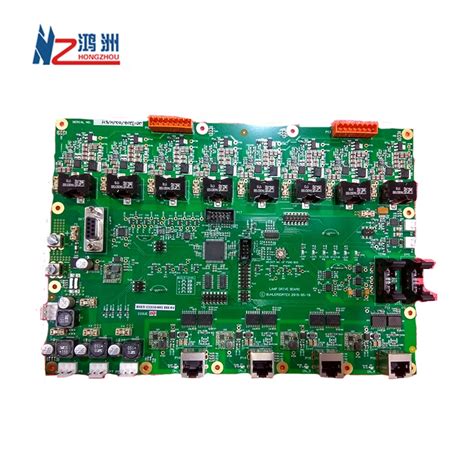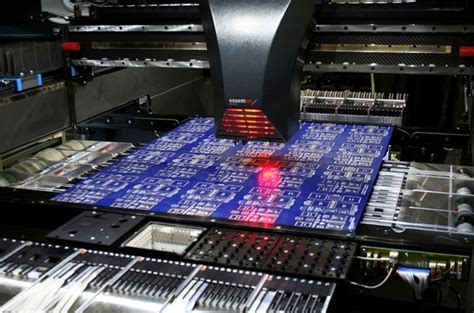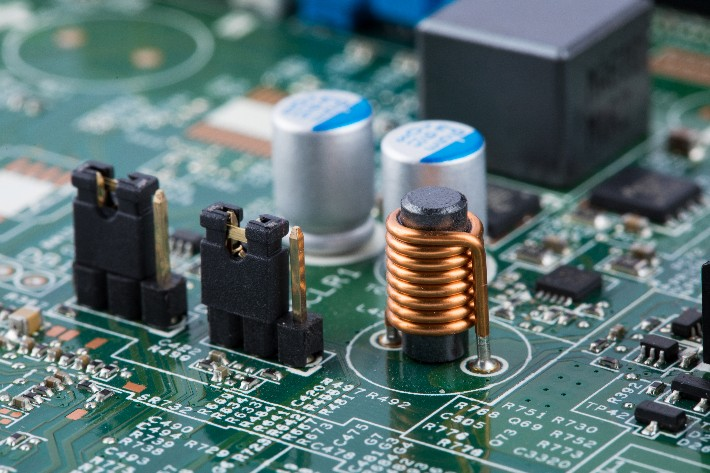Mastering Custom Circuit Board Assembly: A Comprehensive Guide
Key Takeaways
Mastering custom circuit board assembly (PCBA) is essential for anyone looking to enhance their electronics projects. The journey begins with a thorough understanding of the design considerations, emphasizing that every element from layout to component placement can significantly impact the performance of the final product. When selecting materials, factors such as conductivity, thermal management, and durability play pivotal roles in ensuring optimal performance; choosing the right substrate, for instance, can affect both functionality and longevity. The assembly process consists of several critical steps: from preparing the circuit board and applying solder paste to placement of components and soldering techniques. Each step must be executed with precision to avoid common pitfalls that could lead to assembly defects. Quality assurance is integral, employing best practices that include electrical testing and visual inspections to ascertain reliability before deploying the PCB assembly in any application. As industries evolve, innovations in circuit board technologies, such as automation and advanced fabrication techniques, promise to enhance both efficiency and quality in custom circuit board assembly. Overall, embracing these key takeaways will not only streamline your projects but also deepen your understanding of the intricacies involved in creating effective electronic solutions.
Introduction to Custom Circuit Board Assembly
Custom circuit board assembly, commonly referred to as pcb assembly or pcba, is a critical process in the electronics industry, wherein electronic components are mounted onto a pre-fabricated circuit board. Understanding the fundamentals of this process is essential for anyone involved in electronics design and manufacturing. It encompasses various intricate steps that ensure the final product adheres to specific performance standards and reliability.
A key aspect of pcb assembly lies in the design considerations that must be addressed prior to assembly. These include layout optimization, component placement, and signal integrity—all crucial for enhancing the overall functionality of the device. For instance, a well-thought-out design can minimize electromagnetic interference, thereby improving the device’s operational performance.
Choosing the right materials is another crucial element in achieving high-quality pcba. The choice between different types of substrates, such as FR-4 or ceramic, impacts thermal management and durability. Furthermore, it’s essential to select suitable solder materials that match both reliability standards and environmental regulations.
“Effective pcb assembly starts with careful planning and consideration of all parameters involved.”
In summary, mastering custom circuit board assembly involves a detailed understanding of both design and material selection processes that will ultimately influence product outcomes. This foundational knowledge equips engineers and designers with the insights needed to execute successful projects that meet market demands while maintaining budgetary constraints.
Key Design Considerations for Circuit Boards
When embarking on a project involving pcb assembly, it’s crucial to consider several key design factors that can significantly impact the overall performance and reliability of the final product. One primary consideration is the layout design; a well-thought-out layout helps in optimizing signal integrity, minimizing electromagnetic interference, and ensuring robust connections between components. It’s also essential to consider the trace width and spacing, which must adhere to industry standards to prevent issues like overheating or signal degradation. Additionally, the selection of appropriate component placement and routing paths can facilitate easier accessibility during assembly and maintenance.
Using high-quality materials is another vital aspect of pcba design. Components must be chosen based on their fit for purpose in terms of electrical characteristics and environmental resilience. For example, incorporating materials such as FR-4 for substrates can enhance durability and thermal management during operation. Moreover, understanding the thermal properties of components is important to prevent overheating, which can lead to premature failure.
Lastly, it’s important to account for expansion during heating processes; this involves considering the coefficients of thermal expansion (CTE) when selecting materials and designing layouts. By meticulously focusing on these design considerations at the forefront of your custom circuit board assembly endeavors, you set a solid foundation for achieving optimal performance and reliability in your projects.
Selecting the Right Materials for Optimal Performance
Choosing the appropriate materials in pcb assembly is crucial for achieving optimal performance and reliability in your projects. The selection process begins with understanding the specific requirements of your pcba. Factors such as operating environment, electrical conductivity, thermal management, and mechanical strength must be taken into account when deciding on materials for circuit boards. Commonly used substrate materials include FR-4, a robust yet cost-effective choice for most applications, and polyimide, which offers superior thermal stability for high-performance needs. Additionally, conductive material selection is vital; copper is often used due to its excellent electrical properties. However, innovative alternatives such as silver or gold can be considered in scenarios where corrosion resistance or high-frequency performance is paramount. Incorporating materials with suitable finishes, such as HASL (Hot Air Solder Leveling) or ENIG (Electroless Nickel Immersion Gold), can enhance solderability and longevity of the assembled unit. Ultimately, a thorough understanding of how these material choices influence both the ease of assembly and the long-term reliability of your assembly will set a strong foundation for successful pcb assembly projects.
Step-by-Step Process of Assembly
The pcb assembly process is a critical undertaking that requires attention to detail and a systematic approach. To begin, one must start with design files that accurately reflect the intended layout and specifications of the product. This includes verifying the schematic diagrams and ensuring that the Bill of Materials (BOM) is thoroughly reviewed. Following this, the assembly begins with the printing of solder paste onto the PCB using a stencil, which is crucial for effective soldering.
Next, components are placed onto the PCB in a precise manner using either manual or automated techniques, such as pick-and-place machines. Careful handling during this phase ensures that components are aligned correctly to avoid further complications later in the assembly process. After placement, the next step involves reflow soldering, where heat is applied to melt the solder paste, creating solid electrical connections between components and the PCB.
Once soldering is complete, it’s time for thorough inspection. This may include automated optical inspection (AOI) to identify any defects or misalignments in the pcba. Following this inspection, functional testing is performed to confirm that all components are working as intended; this stage is crucial for ensuring reliability and performance.
Finally, wrapping up with packaging and preparation for shipment marks a successful completion of the assembly process. Throughout these steps, adherence to best practices not only enhances quality but also mitigates common challenges encountered in custom circuit board assembly, thereby optimizing final product performance and reliability in various applications.
Best Practices for Testing and Quality Assurance
Ensuring the quality and reliability of custom circuit board assembly (PCB assembly) is paramount in electronic manufacturing. Implementing robust testing methodologies throughout the PCBA process is essential to identify potential flaws early and guarantee optimal performance. First, it is critical to develop a comprehensive testing strategy that incorporates both in-circuit tests (ICT) and functional tests. These tests allow for the detection of manufacturing defects, such as soldering issues or component placement errors. Additionally, design for testability (DFT) should be considered during the design phase, enabling easier access to critical points on the circuit.
Utilizing automated systems can greatly enhance testing accuracy and efficiency, reducing human error during inspections. Additionally, employing thermal imaging can help identify overheating components, while ultrasonic testing may detect hidden solder joint failures. Establishing a feedback loop through rigorous quality assurance checks at various stages of the assembly process helps refine practices and improve outcomes over time. By adhering to these best practices, organizations can ensure their custom circuit board assembly meets required specifications and performs reliably in its intended application.
Common Challenges and Solutions in Circuit Board Assembly
In the realm of pcb assembly, there are various challenges that can arise during the process, often impacting the overall quality and efficiency of the production cycle. One common issue is misalignment of components, which can lead to poor electrical connections and functional failures in the pcba. To mitigate this, it’s crucial to implement precise placement techniques using automated pick-and-place machines, alongside thorough pre-assembly inspections to ensure components are placed correctly. Another challenge is related to thermal management. Overheating during assembly can compromise solder joints and affect component longevity. Employing effective thermal control measures, such as appropriate soldering temperatures and using materials with adequate thermal conductivity, is essential for maintaining optimal performance.
Moreover, contamination on circuit boards before assembly can result in unfit solder joints that fail during operation. To address this concern, rigorous cleaning processes should be introduced to eliminate any residues or particles before assembly begins. Similarly, issues with component sourcing can arise when specific parts are unavailable or on backorder, which can stall production. Building strong relationships with reliable suppliers and having backup options for critical components can help ensure that projects stay on track.
Lastly, managing documentation throughout the assembly process is vital for ensuring all team members have access to essential data regarding updates or changes made during production. Clear documentation practices not only enhance communication within teams but also aid in traceability if problems occur post-assembly. By proactively addressing these common challenges with targeted strategies and best practices, manufacturers can significantly enhance the quality and reliability of their pcba outcomes.
Innovations in Custom Circuit Board Technologies
The landscape of pcb assembly is continuously evolving, driven by rapid advancements in technology and the increasing demand for more complex circuitry in various applications. One of the most notable innovations is the rise of automated assembly processes that enhance efficiency, reduce human error, and ensure consistent quality in the production of pcba. These automation systems utilize sophisticated machinery equipped with advanced vision systems that can detect and correct misalignments, ensuring accurate placement of components on the board. Additionally, the integration of flexible printed circuit boards (FPCBs) allows for greater design freedom, enabling engineers to create circuits that can bend and adapt to unique device shapes while maintaining optimal performance. Another significant trend is the utilization of high-density interconnect (HDI) technology, which allows for more components to fit within a smaller footprint without sacrificing performance or reliability. Smart materials are also making waves in circuit board technology; materials that change their properties based on environmental conditions can enhance the functionality of pcb assembly solutions. As these innovations continue to shape the industry, they not only enable more efficient production but also play a crucial role in addressing the growing complexity of modern electronic devices.
Conclusion and Future Trends in Circuit Board Assembly
As we look ahead, the landscape of pcb assembly and pcba continues to evolve with rapid advancements in technology. This evolution not only enhances the capabilities of circuit boards but also influences design strategies and materials selection. Future trends indicate a shift towards more sustainable practices, including the use of eco-friendly materials in custom circuit board assembly. Companies are increasingly focusing on reducing their environmental footprint while maintaining the highest standards of performance and reliability. Moreover, innovations such as automation and artificial intelligence are transforming the assembly process, making it more efficient and cost-effective. This integration offers manufacturers the ability to handle complex designs with precision, ensuring that products meet the rigorous demands of modern consumers. In addition, implementing advanced testing techniques during the pcba process will play a critical role in quality assurance, thereby enhancing durability and functionality. As we embrace these changes, staying abreast of industry best practices will be essential for achieving optimal results in custom circuit board assembly projects. Ultimately, keeping an eye on these future trends will empower engineers and manufacturers to adapt their approaches for greater success in an ever-competitive market.
Conclusion
In summary, mastering custom circuit board assembly (or PCBA) is a multifaceted process that combines technical skill, design acumen, and an understanding of industry standards. As we explored throughout this guide, the journey of PCB assembly begins with crucial design considerations that ensure functionality and performance. Each component’s selection—from copper thickness to substrate materials—plays a significant role in the final output. By utilizing systematic assembly techniques and adhering to best practices for testing and quality assurance, one can significantly reduce errors and enhance the reliability of circuit boards.
Moreover, sitting at the intersection of innovation and practicality, modern advancements in custom circuit board technologies offer exciting prospects for increased efficiency and miniaturization. As manufacturers continue to innovate, being aware of these developments is critical for anyone involved in PCBA. Looking ahead, understanding these trends will not only inform effective strategies for overcoming challenges but also serve as a roadmap for future projects in this dynamic field. Embracing these insights will undoubtedly pave the way for achieving superior results in your own circuit board assembly endeavors.
FAQs
What is PCB assembly?
PCB assembly, or PCBA, refers to the process of soldering electronic components onto a printed circuit board (PCB) to create a functional electronic circuit. This process is critical in manufacturing electronics that operate reliably.
What are the key steps in the PCB assembly process?
The key steps in the pcb assembly process include designing the circuit board, preparing the components, applying solder paste, placing components on the board, soldering, and conducting testing. Each step must be executed with attention to detail to ensure optimal performance.
What materials are commonly used in circuit board assembly?
Common materials used in pcb assembly include fiberglass for the board substrate, copper for electrical pathways, and various metals such as gold or tin for soldering. The selection of materials can greatly influence both performance and reliability.
How do I ensure quality assurance during PCB assembly?
Quality assurance during PCBA involves regular testing at various production stages, including visual inspections and automated testing methods like functional tests. Adopting best practices for quality control can help mitigate potential issues in the final product.
What challenges might I face in custom PCB assembly?
Challenges in custom PCB assembly can include design complexities, component sourcing difficulties, and alignment errors during assembly. It is important to plan ahead and implement engineering solutions to overcome these challenges effectively.
For further information on enhancing your understanding of custom circuit board assembly, please click here: Andwin PCB Assembly






